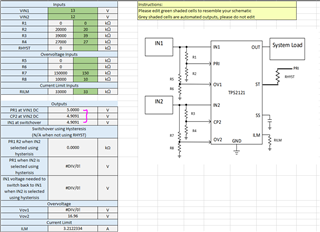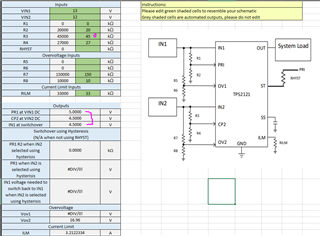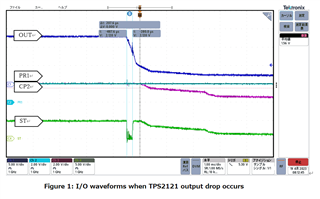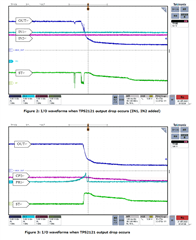Hello,
I am an FAE for a distributor that handles TI products.
I have received inquiries from customers about the TPS2121.
In the customer's circuit, the input switching mode uses XREF, and the ST pin is used as a status signal instead of hysteresis.
Both IN1 and IN2 are 12V.
The symptom in question is that the output voltage drops by about 25ms when switching from IN1 to IN2.
This is a similar symptom to the thread below, and I'm assuming the same is happening in my customer's circuit.
(Question 1)
In the thread below, it seems that the output is dropping due to the occurrence of bounce near the reference voltage.
Is output drop the only symptom caused by this bounce?
Also, what is the assumed cause of the output drop?
Is the internal Nch-MOSFET malfunctioning?
Are there any other symptoms after that?
(Question 2)
How fast should the comparison signal be switched with respect to the reference voltage so that the bounce does not cause an output drop?
Please let me know if there is a recommended value for the time for the comparison signal to change.
Best regards,
e2e.ti.com/.../tps2121-output-voltage-dropout-during-switchover
https://e2e.ti.com/support/power-management-group/power-management/f/power-management-forum/1064834/tps2121-fast-switchover-time?tisearch=e2e-sitesearch&keymatch=tps2121







